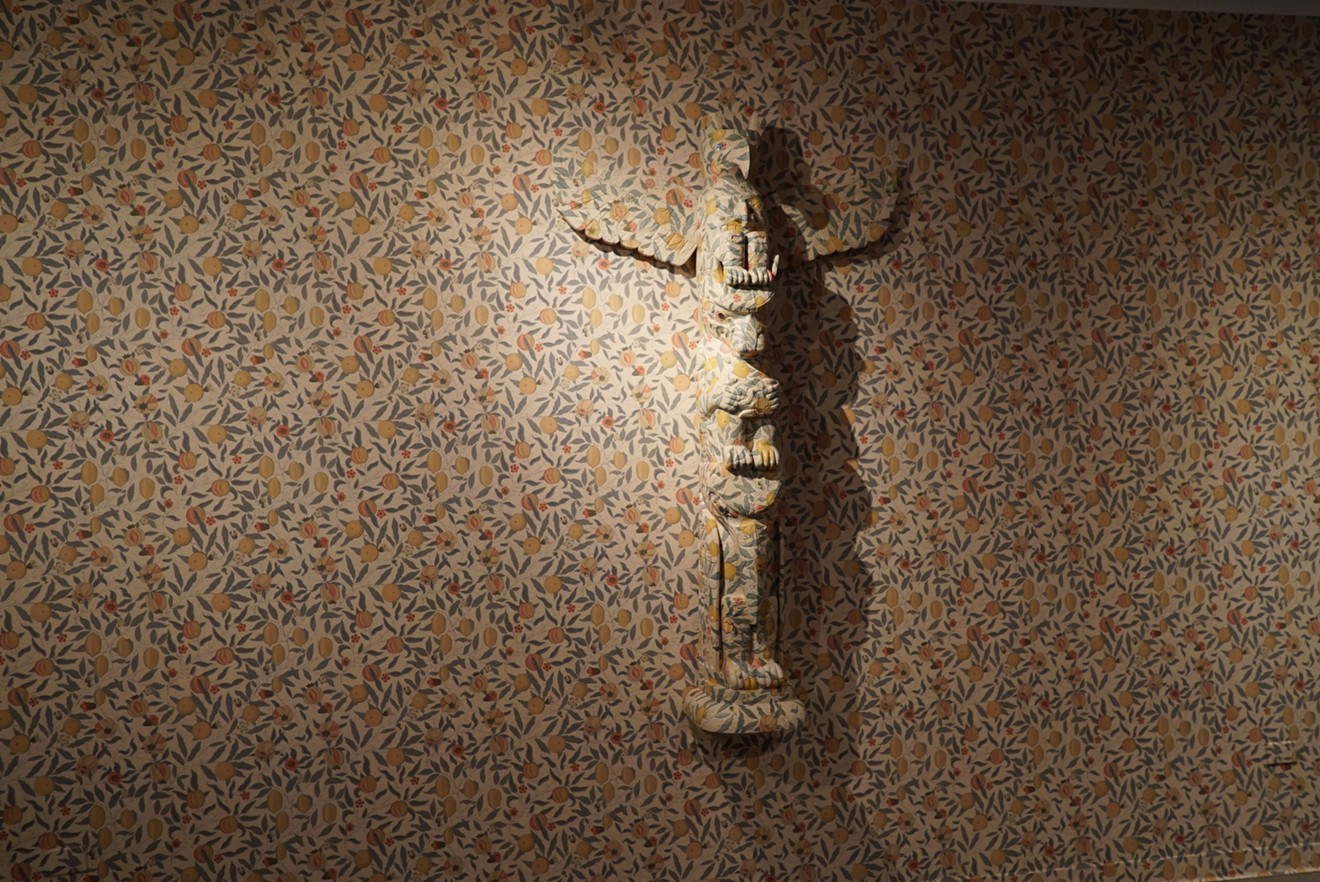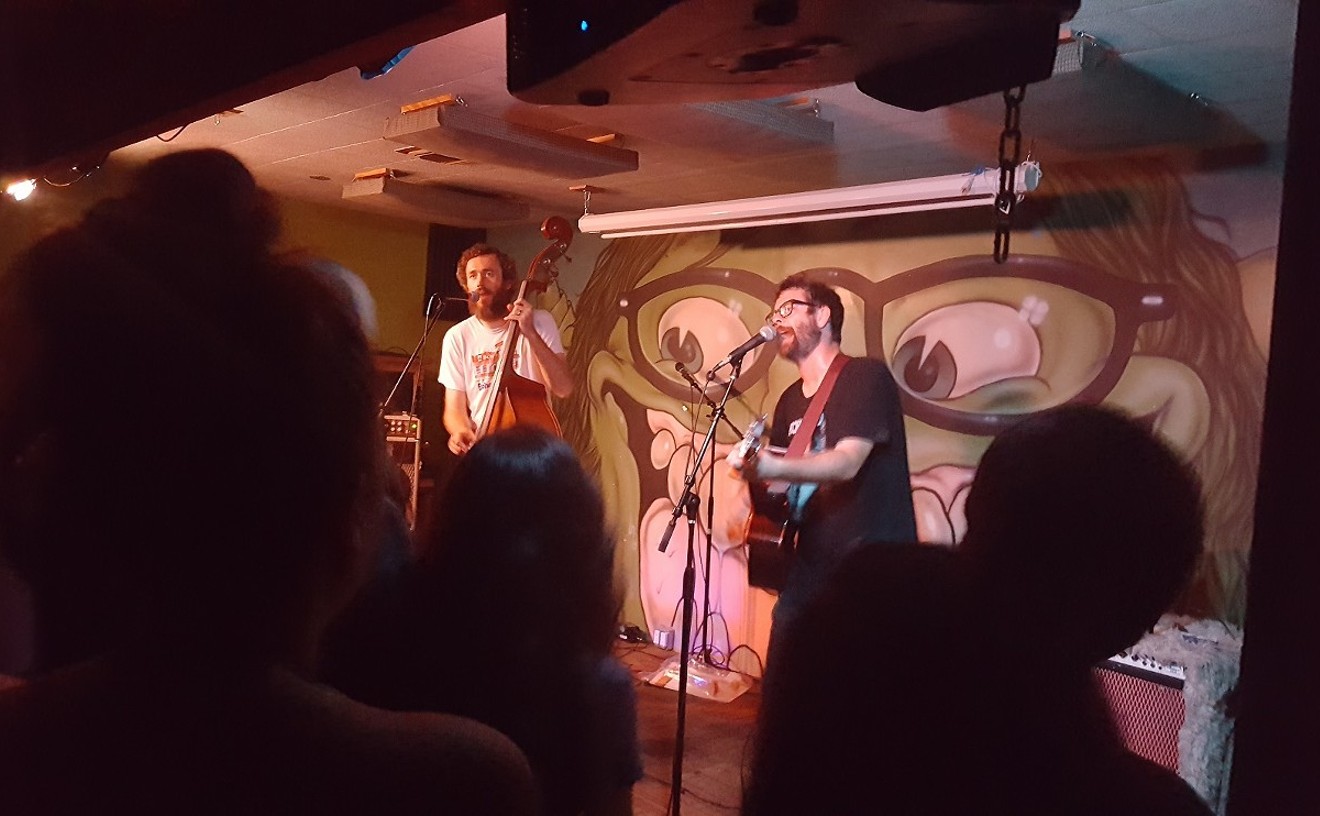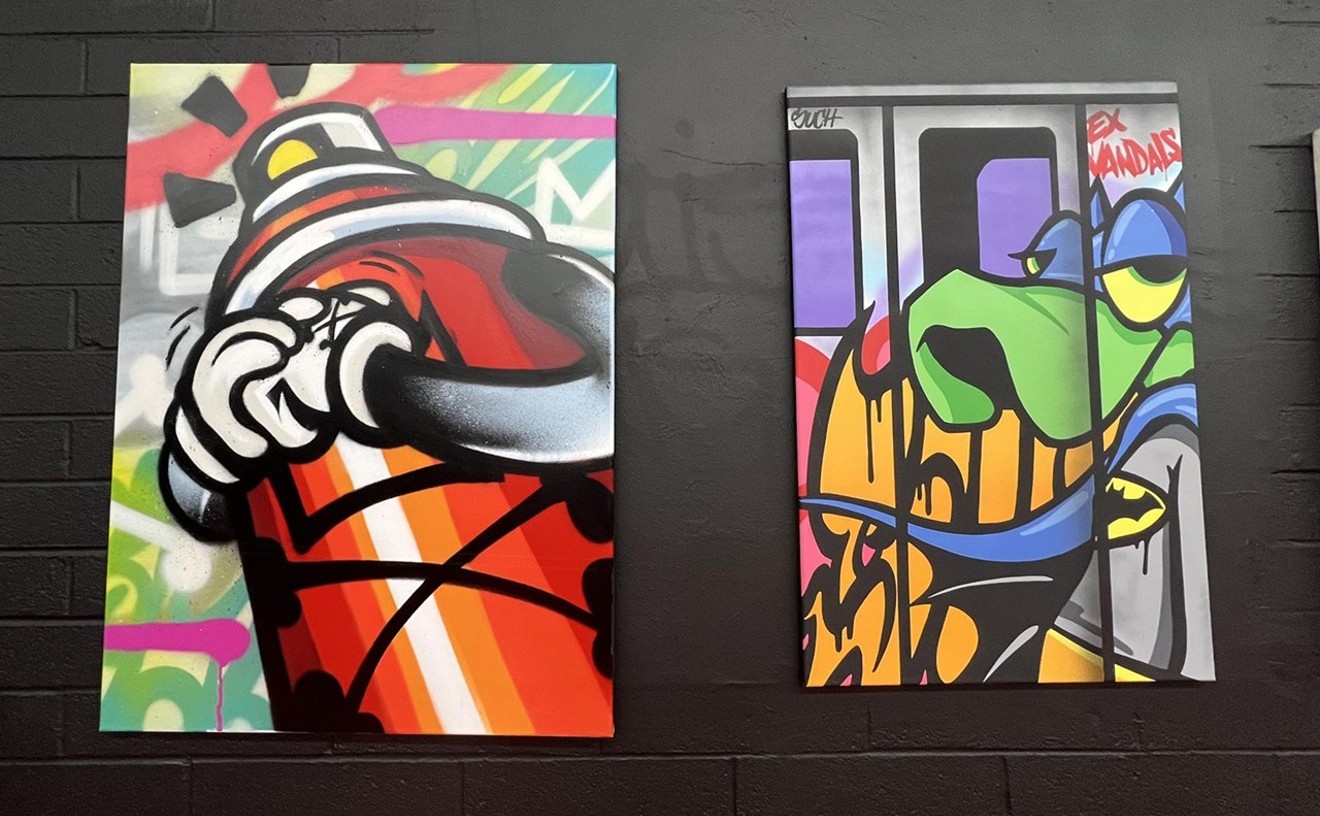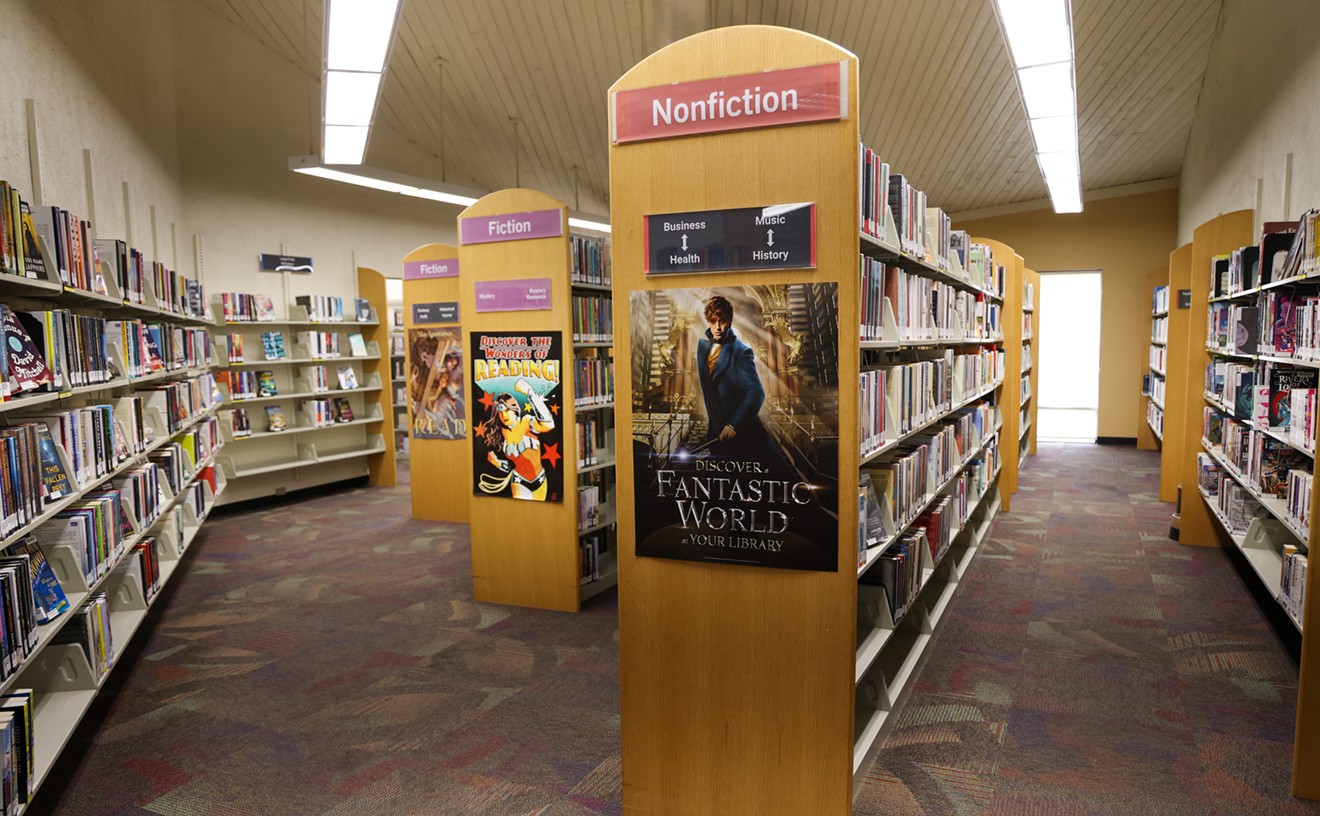Nicholas Galanin/Yéil Ya-Tseen has a story to tell.
It’s a tale of two cultures, conveyed through a new exhibition at the Heard Museum. “Dear Listener: Works by Nicholas Galanin” opened on Friday, May 4, and continues through Monday, September 3.
In reality, it’s a collection of stories. They’re curated by Erin Joyce, who joined Heard Museum as fine arts curator in 2017. Joyce also curated Cheyenne Randall’s recent mural project for the museum.
Galanin has been making and showing work internationally for more than a decade — using story, song, and visual elements in diverse media including sculpture, prints, videos, and installation art.
"Dear Listener" is a mid-career retrospective for the Tlingit/Unangax multidisciplinary artist, who hails from Sitka, Alaska. It’s a city and borough near Juneau, the state’s capital. And it has a long history of conquest, by Russian and American colonizers.
The exhibition explores the contrasts between indigenous culture and settler culture, addressing the vast chasm between Native and non-Native perspectives on, and experiences of, the American dream.
It’s a compelling tale of two cultures, sometimes told with creative collaborators, and ever mindful of myriad connections — between history and contemporary life, land and people, and experience and perception.
“All of my work is connected to other things, and to the community and to the land and to a continuum,” Galanin says. “I feel joy in this continuum and I carry stories from history along with me to these spaces and places.”
Of course, neither indigenous nor settler culture is monolithic or homogeneous. But the two-tales approach is a useful tool for exploring significant differences between them —- and the ways colonizers perpetuate violence against Native peoples, even as they appropriate Native culture for their own use.
For A Supple Plunder, Galanin worked with his brother, Jerrod Galanin, using the name Leonard Getinthecar. The installation includes torsos representing Unangan men lined up one behind the other, then shot by Russian soldiers to see how many a single bullet could kill.
For God Complex, Galanin created a crucifix-like object using police riot gear crafted of iridescent glazed porcelain. Suspended high on a wall, similar to the mounting of a Christian devotional object inside a church, it’s one of several works addressing the role of religion and the police in both asserting cultural supremacy and undertaking cultural genocide.
Galanin explores other forms of violence, too.
With Indian Children’s Bracelet, a small pair of iron handcuffs engraved by the artist, Galanin addresses the violence separating children from their families during the boarding-school period. With We Dreamt Deaf, a taxidermy polar bear and polar-bear rug, Galanin both positions climate change as a violent act and decries the trophy mentality of hunting for sport rather than sustenance.
Often, Galanin uses pop culture to make a point.
It’s most evident in Things Are Looking Native, Native's Looking Whiter. The giclée print blends half-faces from two photographs. One is an Edward Curtis image of a Hopi woman wearing a customary hair style for unmarried women. The other is an iconic image of Carrie Fisher, wearing a similar style as the Star Wars character Princess Leia. Taken together, they reference the ways colonizers appropriate indigenous culture.
Galanin recognizes that different people will take different things from his work. “Everybody brings their own experience to everything, always," he says.
The Heard Museum created a free gallery guide for visitors, which includes brief details about featured works. Galanin recommends people see the exhibit first, then review related materials. It's a way to find your own meanings in the work, while being mindful of the artist's intentions. "It's okay if your perceptions change as you get more knowledge."
Although Galanin doesn’t make direct reference to the present moment in American history, “Dear Listener” is particularly poignant within the context of America’s current political milieu.
Consider The American Dream is Alie and Well, depicting the form of a bear head with prominent gold teeth, attached to an American flag shaped like a bear hide. With claws made of large bullets, it speaks to wealth and force as strategies for vilifying immigrants and maintaining oppressive power structures.
Nearby, viewers see the wool and cotton White Noise American Prayer Rug, shaped like the large-screen television that’s come to symbolize success in modern-day America.
One of several textile pieces in the show, it prompts reflection on the literal noise of today’s 24/7 news cycle, even as it symbolizes other forms of cultural noise used to silence indigenous culture and reinforce exclusionary systems.
With "Dear Listener," Galanin demands that viewers confront their histories, assumptions and ways of being in the world, then let the insights and feelings called forth inform their future actions as individuals and community members.
"Dear Listener: Works by Nicholas Galanin" continues through Monday, September 3, at Heard Museum. The exhibit is free with admission, which is $18 for adults. Get details on the Heard Museum website.
[
{
"name": "Air - MediumRectangle - Inline Content - Mobile Display Size",
"component": "18478561",
"insertPoint": "2",
"requiredCountToDisplay": "2"
},{
"name": "Editor Picks",
"component": "16759093",
"insertPoint": "4",
"requiredCountToDisplay": "1"
},{
"name": "Inline Links",
"component": "17980324",
"insertPoint": "8th",
"startingPoint": 8,
"requiredCountToDisplay": "7",
"maxInsertions": 25
},{
"name": "Air - MediumRectangle - Combo - Inline Content",
"component": "16759092",
"insertPoint": "8th",
"startingPoint": 8,
"requiredCountToDisplay": "7",
"maxInsertions": 25
},{
"name": "Inline Links",
"component": "17980324",
"insertPoint": "8th",
"startingPoint": 12,
"requiredCountToDisplay": "11",
"maxInsertions": 24
},{
"name": "Air - Leaderboard Tower - Combo - Inline Content",
"component": "16759094",
"insertPoint": "8th",
"startingPoint": 12,
"requiredCountToDisplay": "11",
"maxInsertions": 24
}
]














